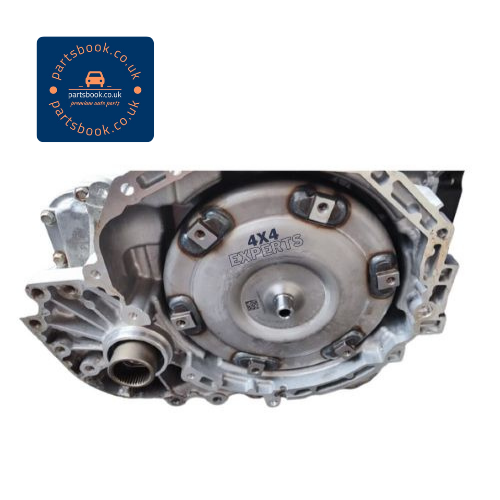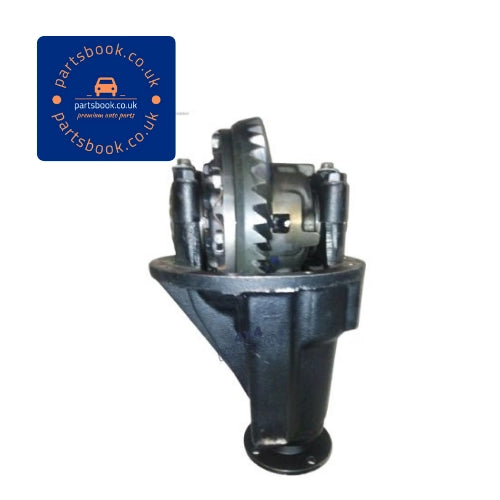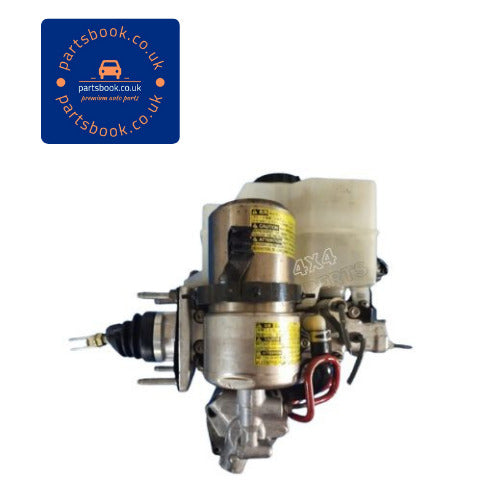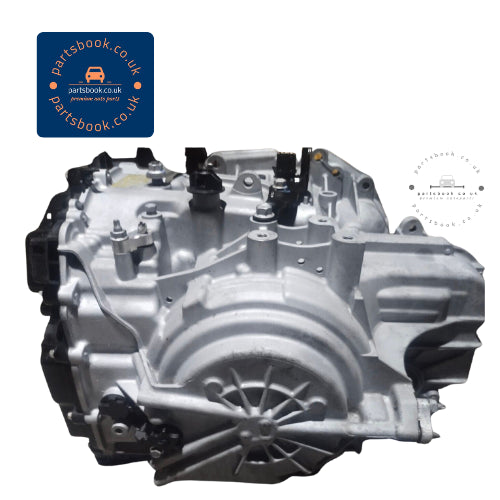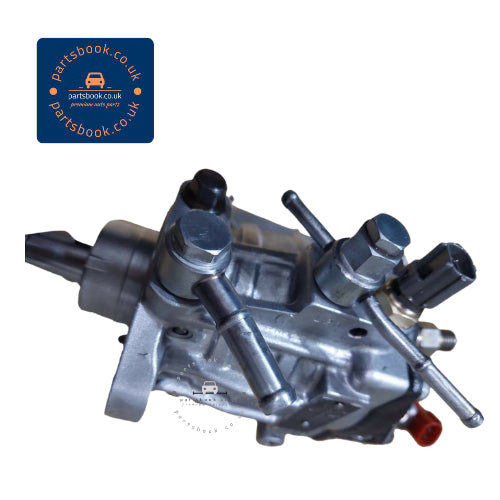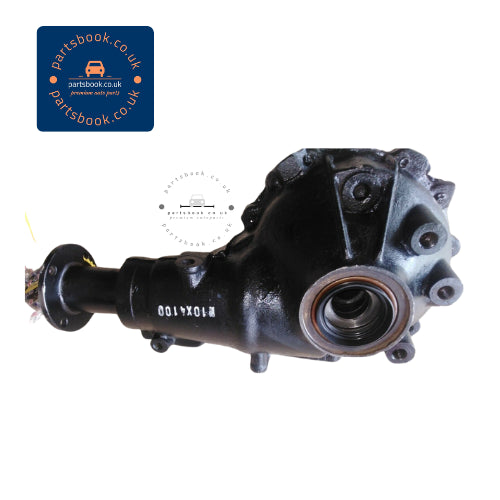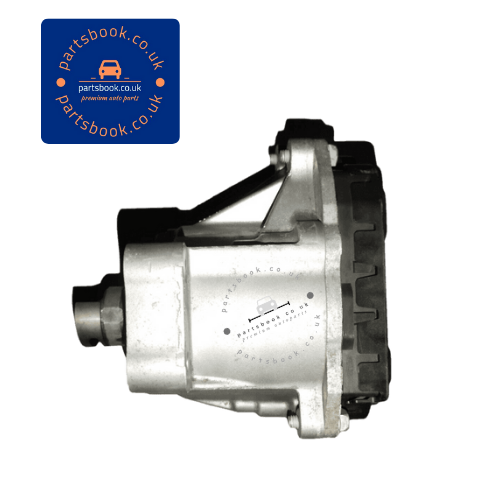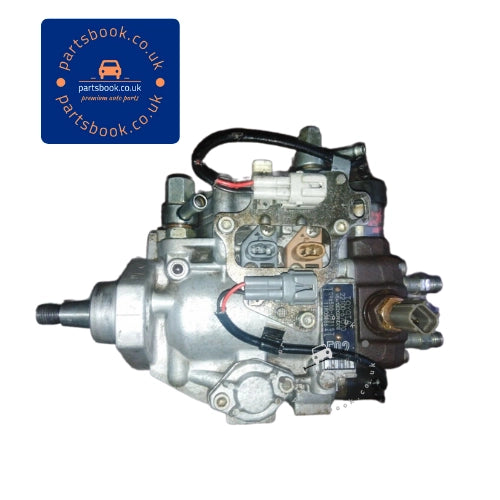ABS Pump Module
In the dynamic era of automotive technology, one key player silently ensures that every journey on the road is safer and more controlled—the Anti-lock Braking System (ABS) module. This critical component has become synonymous with modern vehicle safety, revolutionizing the way we approach braking.
What is an ABS Module?

At its core, the ABS module is the technological wizardry responsible for the Anti-lock Braking System, a sophisticated safety feature integrated into most vehicles today. Its primary function is to prevent wheel lock-up during braking, a phenomenon that could lead to skidding and loss of control.
In simpler terms, imagine a scenario where you need to slam on the brakes to avoid an obstacle. Without ABS, the wheels could potentially lock up, causing your vehicle to slide uncontrollably. ABS intervenes in this critical moment, pulsating the brakes at a rapid pace to maintain traction and steering control.
Evolution of ABS Technology

Historical Background
The journey of the Anti-lock Braking System (ABS) is a captivating tale that spans several decades, marked by relentless innovation and a quest for safer roads. To truly appreciate the ABS module's significance today, let's take a stroll through its historical roots.
The inception of ABS can be traced back to the mid-20th century. In the 1950s, a visionary engineer named Gabriel Voisin conceptualized a system to prevent wheel lock-up during braking. However, it wasn't until the 1970s that the technology started making its way into mainstream automotive design.
The first commercially available ABS system was introduced by Bosch in 1978. Initially featured in high-end luxury vehicles, ABS gradually found its way into more affordable cars, becoming a sought-after safety feature. This pioneering technology laid the groundwork for a paradigm shift in vehicle safety standards.
Technological Advancements Over the Years
As the automotive industry embraced ABS, continuous advancements in technology propelled the system into the 21st century. Early ABS systems were effective but relatively basic compared to their modern counterparts.
The 1990s witnessed the integration of electronic control units (ECUs) into ABS systems, introducing a level of sophistication that allowed for more precise control. This refinement marked a turning point, enhancing the system's ability to adapt to diverse driving conditions.
In the 2000s, ABS evolved further with the integration of sensors capable of monitoring individual wheel speeds. This granular level of control enabled ABS to respond more effectively to variations in road conditions, maximizing safety across different terrains.
Fast forward to the present day, and ABS has become a staple in virtually all new vehicles. Advanced ABS systems feature predictive algorithms, self-diagnostic capabilities, and seamless integration with other vehicle safety systems.
The evolution of ABS technology mirrors the broader trajectory of automotive innovation. What started as a groundbreaking concept has matured into a standard feature, a testament to the relentless pursuit of safer and more efficient braking systems.
As we navigate the intricate details of the ABS module's evolution, we'll uncover the components that drive its functionality and explore how these advancements contribute to a safer driving experience. Join us on this technological journey as we unravel the inner workings of the ABS module.
Components of ABS Module
Understanding the magic behind the Anti-lock Braking System (ABS) module requires a closer look at its intricate components. Like the gears in a well-oiled machine, each part plays a crucial role in ensuring the ABS system operates seamlessly.
Sensors and Their Role
At the heart of the ABS module are wheel speed sensors. These sensors, typically located at each wheel, continuously monitor the rotational speed of the wheels. The information they gather is vital for the ABS system to detect any discrepancies in wheel speed, indicating a potential lock-up.
Imagine navigating a slippery road surface. The wheel speed sensors pick up on the variations in wheel rotation caused by reduced traction. In response, the ABS system springs into action, modulating brake pressure to prevent wheel lock-up and maintain control.
Electronic Control Unit (ECU) Function
Think of the Electronic Control Unit (ECU) as the brains of the ABS module. This small but powerful computer processes the data received from the wheel speed sensors in real-time. It analyzes this information to determine the optimal braking force required for each wheel.
The ECU operates at lightning speed, making split-second decisions to prevent wheel lock-up while maintaining the vehicle's stability. Its ability to adapt to changing conditions, such as sudden acceleration or deceleration, is what sets modern ABS systems apart.
In essence, the ECU transforms the ABS module from a reactive system into a proactive guardian, anticipating and responding to potential skidding before it occurs.
As we delve deeper into the ABS module, the synergy between these components becomes more apparent. The sensors act as vigilant sentinels, feeding data to the ECU, which, in turn, orchestrates a ballet of brake pressure adjustments. Together, they create a harmonious symphony of safety, allowing drivers to navigate challenging road conditions with confidence.
In the upcoming sections, we'll explore how this coordination unfolds in real-world scenarios, offering insights into the step-by-step process of ABS operation. Join us as we demystify the ABS module and shed light on the technology that transforms braking from a mechanical action into a precision dance.
How ABS Works

Now that we've uncovered the essential components of the Anti-lock Braking System (ABS) module, let's embark on a journey through the step-by-step process of how ABS works its magic to ensure controlled and safe braking.
Step-by-Step Breakdown of the ABS Process
- Detection of Wheel Speed Variations:
- The process begins when the wheel speed sensors detect variations in the rotational speed of the wheels.
- These sensors act as vigilant eyes, continuously monitoring each wheel's speed to identify potential wheel lock-up.
- Transmission of Data to the Electronic Control Unit (ECU):
- The gathered data is swiftly transmitted to the Electronic Control Unit (ECU), the central processing unit of the ABS module.
- The ECU receives and interprets this data in real-time, assessing the need for intervention based on the detected wheel speed irregularities.
- Analysis and Decision-Making by the ECU:
- The ECU employs sophisticated algorithms to analyze the data and determine the optimal braking force required for each wheel.
- It factors in various variables, such as road conditions, vehicle speed, and driver inputs, to make split-second decisions.
- Brake Pressure Modulation:
- With the decision made, the ECU communicates with the brake system to modulate the brake pressure.
- Instead of a traditional, static brake application, ABS uses a pulsating method. The brake pressure is rapidly adjusted—releasing and reapplying—multiple times per second.
- Prevention of Wheel Lock-Up:
- The rapid pulsating of brake pressure prevents wheel lock-up, allowing the wheel to maintain traction with the road surface.
- This dynamic control ensures that the driver maintains steering capability even during hard braking, enhancing overall vehicle stability.
- Continuous Monitoring and Adaptation:
- Throughout the braking event, the ABS system continuously monitors wheel speed and adjusts brake pressure accordingly.
- This adaptability is crucial, especially in unpredictable driving conditions, ensuring that the ABS system remains effective in various scenarios.
Real-World Application Scenarios
To better grasp the practical impact of ABS, let's consider real-world scenarios. Imagine navigating a rain-soaked road where traction is compromised. As you apply the brakes, the wheel speed sensors detect the potential for lock-up. The ECU, in a fraction of a second, adjusts brake pressure, preventing skidding and maintaining control.
Similarly, during emergency stops or sudden deceleration, ABS allows you to maintain steering control, crucial for avoiding obstacles or navigating tight spaces. The pulsating brake pressure may feel unusual, but it's a testament to the ABS system working diligently to keep you safe.
In essence, ABS transforms braking from a binary action into a dynamic dance—a choreography of sensor data, ECU intelligence, and precise brake modulation. As we move forward in our exploration of the ABS module, we'll delve into the tangible benefits it brings to vehicle safety and braking performance. Join us as we uncover the impact of this innovative technology on the road.
Benefits of ABS Module
The Anti-lock Braking System (ABS) module isn't just a technological marvel; it's a silent guardian on the road, offering a multitude of benefits that elevate vehicle safety and redefine braking performance.
Improved Vehicle Safety
One of the primary advantages of ABS is its profound impact on overall vehicle safety. By preventing wheel lock-up during braking, ABS ensures that drivers maintain control and steering capability in emergency situations. This translates to a significant reduction in the risk of accidents, particularly in scenarios where sudden stops or evasive maneuvers are necessary.
Consider a scenario where a driver encounters an unexpected obstacle on the road. Without ABS, hard braking could lead to skidding, compromising the driver's ability to steer away from danger. ABS intervenes in these critical moments, allowing the driver to brake forcefully while still retaining control over the direction of the vehicle. The result is a safer and more controlled response to unforeseen challenges on the road.
Impact on Braking Performance
Beyond safety, ABS enhances the fundamental performance of braking systems. Traditional braking methods, especially in emergency situations, often lead to wheel lock-up, increasing stopping distances and reducing overall effectiveness.
ABS addresses this limitation by modulating brake pressure at a rapid pace. The pulsating action prevents the wheels from locking up, maximizing traction with the road surface. This not only shortens stopping distances but also ensures that the vehicle remains stable and responsive during braking.
In essence, ABS transforms braking into a precision maneuver, allowing drivers to navigate challenging conditions with confidence. Whether it's a sudden downpour, icy roads, or a split-second need for a hard stop, ABS provides a level of control and safety that goes beyond traditional braking systems.
As we explore the benefits of the ABS module, we'll delve into real-world applications and examine how ABS contributes to safer driving experiences. Join us in unraveling the layers of this crucial safety feature, understanding why ABS has become a standard necessity in the automotive landscape.
Common Issues and Troubleshooting

While the Anti-lock Braking System (ABS) module is a robust and reliable component, like any technology, it may encounter issues over time. Understanding these common problems and knowing how to troubleshoot them can empower vehicle owners to maintain the optimal functionality of their ABS systems.
Identifying ABS Problems
- ABS Warning Light:
- One of the most noticeable signs of ABS issues is the illumination of the ABS warning light on the dashboard.
- This light indicates a potential malfunction in the ABS system, and ignoring it can lead to reduced safety during braking.
- Unusual Brake Pedal Behavior:
- If you experience unusual sensations in the brake pedal, such as pulsating or unresponsiveness, it could signify ABS problems.
- Pay attention to any changes in how the brake pedal feels during braking.
- Strange Noises During Braking:
- Unusual noises, such as grinding or clicking, while applying the brakes may indicate issues with the ABS system.
- These noises can be a result of malfunctioning sensors or faulty ABS components.
DIY Troubleshooting Tips
- Check ABS Fuse:
- A blown ABS fuse can cause the system to fail. Consult your vehicle's manual to locate the ABS fuse and inspect it for any signs of damage.
- Inspect Wheel Speed Sensors:
- Wheel speed sensors are crucial for ABS operation. Inspect these sensors for visible damage or debris, and clean them if necessary.
- In some cases, a simple cleaning can resolve sensor-related issues.
- Review Brake Fluid Levels:
- Adequate brake fluid levels are essential for proper ABS function. Check the brake fluid reservoir and ensure it is at the recommended level.
- Low brake fluid can lead to ABS malfunctions, so topping it up may resolve issues.
- Perform a Visual Inspection of ABS Components:
- Visually inspect ABS components for signs of wear, corrosion, or damage. Look for loose connections or exposed wiring.
- Addressing visible issues promptly can prevent further damage to the ABS system.
- Clear ABS System Codes:
- If you have access to an OBD-II scanner, you can clear ABS system codes. However, this is a temporary solution, and if the issue persists, professional intervention may be necessary.
ABS Module Maintenance
Ensuring the longevity and optimal performance of the Anti-lock Braking System (ABS) module requires proactive maintenance. While ABS is designed to be robust, regular checks and inspections play a crucial role in identifying potential issues before they escalate. Let's explore the essential aspects of ABS module maintenance to keep this vital safety feature in top-notch condition.
Regular Checks and Inspections
- Visual Inspection of ABS Components:
- Conduct a visual inspection of the ABS components, including sensors, wiring, and the Electronic Control Unit (ECU).
- Look for signs of wear, corrosion, or damage. Address any issues promptly to prevent further deterioration.
- Wheel Speed Sensor Inspection:
- Focus on the wheel speed sensors, which are integral to ABS functionality.
- Clean the sensors regularly to remove dirt and debris, as these can interfere with accurate wheel speed readings.
- Brake Fluid Level Check:
- Maintain the recommended brake fluid levels in the reservoir.
- Low brake fluid levels can impact ABS performance, so regular checks and top-ups are essential.
- Perform ABS System Self-Tests:
- Some vehicles allow users to perform ABS system self-tests using diagnostic tools.
- Follow the manufacturer's guidelines to initiate self-tests and address any identified issues.
- Inspection of ABS Wiring and Connectors:
- Examine the wiring connecting ABS components for wear or damage.
- Ensure that connectors are securely fastened and free from corrosion.
Importance of Professional Maintenance
While vehicle owners can perform basic checks, professional maintenance is crucial for a comprehensive assessment of the ABS module. Professional technicians have the expertise and tools to delve deeper into the system, ensuring all components function optimally. Here's why professional maintenance is vital:
- Advanced Diagnostics:
- Professional technicians use advanced diagnostic tools to identify issues that may not be apparent during visual inspections.
- Comprehensive diagnostics help uncover potential problems before they lead to ABS malfunctions.
- Calibration and Adjustment:
- ABS modules require precise calibration to function effectively.
- Professional maintenance includes calibration and adjustment, ensuring the system operates within specified parameters.
- Software Updates:
- Manufacturers may release software updates to improve ABS performance or address known issues.
- Professional maintenance includes updating the ABS system software to the latest version for enhanced functionality.
- Comprehensive System Checks:
- Professional technicians conduct thorough system checks, examining not only the ABS module but also its integration with other vehicle systems.
- This comprehensive approach ensures that the entire braking and safety system operates cohesively.
By combining regular user checks with periodic professional maintenance, vehicle owners can enhance the reliability and effectiveness of their ABS modules. Investing in the care of this critical safety feature contributes to safer driving experiences and reinforces the role of ABS in preventing accidents and maintaining vehicle control during braking.
ABS Module in Different Vehicle Types

The versatility of the Anti-lock Braking System (ABS) module extends across various vehicle types, from compact cars to heavy-duty trucks and motorcycles. Understanding how ABS adapts to the specific needs of each vehicle type sheds light on its universal importance in enhancing safety on the road.
Application in Cars, Motorcycles, and Trucks
- Cars:
- In the realm of passenger cars, ABS has become a standard feature in most modern models.
- ABS provides a crucial safety net for drivers, especially in emergency braking situations, ensuring controlled stops without sacrificing steering responsiveness.
- Motorcycles:
- Motorcycles, with their unique dynamics, benefit significantly from ABS technology.
- ABS for motorcycles is designed to prevent wheel lock-up during sudden stops, reducing the risk of skidding and enhancing the rider's ability to maintain control.
- Trucks:
- ABS plays a pivotal role in the safety of heavy-duty trucks and commercial vehicles.
- The ABS module in trucks ensures stable and controlled braking, particularly important for vehicles with substantial weight and cargo.
Tailoring ABS for Specific Vehicle Needs
Each vehicle type comes with its own set of challenges and requirements, and ABS technology is tailored to meet these specific needs.
- Compact Cars:
- ABS in compact cars emphasizes responsiveness and precision.
- These systems are tuned to provide optimal control during abrupt stops, contributing to the overall safety of smaller vehicles.
- Motorcycles:
- ABS for motorcycles is designed with the unique dynamics of two-wheeled vehicles in mind.
- The system accounts for factors such as the rider's leaning position and varying road conditions to deliver effective braking without compromising stability.
- Heavy-Duty Trucks:
- ABS in heavy-duty trucks focuses on managing the substantial weight and momentum of these vehicles.
- The system ensures that even under heavy loads, trucks can come to a controlled stop without the risk of jackknifing or skidding.
Integration with Other Vehicle Systems
The synergy between the Anti-lock Braking System (ABS) module and other critical vehicle safety systems, such as Traction Control System (TCS) and Electronic Stability Control (ESC), forms a sophisticated network that enhances overall driving stability and safety. Let's explore how these systems work in tandem, creating a comprehensive safety net for drivers in various driving conditions.
ABS and Traction Control System (TCS)
- ABS and Traction Control Basics:
- Traction Control System (TCS) and ABS share a common goal—to prevent wheel slip and loss of traction.
- While ABS focuses on preventing wheel lock-up during braking, TCS intervenes during acceleration to prevent excessive wheel spin.
- Collaboration in Challenging Conditions:
- In adverse conditions such as rain, snow, or ice, ABS and TCS collaborate seamlessly.
- ABS ensures controlled braking without skidding, while TCS modulates engine power or applies brakes to specific wheels to prevent wheel spin during acceleration.
- Enhanced Stability during Acceleration and Braking:
- The integration of ABS and TCS contributes to enhanced stability during both acceleration and braking phases.
- This dual functionality ensures that drivers maintain control not only during emergency stops but also when accelerating on slippery surfaces.
ABS and Electronic Stability Control (ESC)
- ESC for Enhanced Vehicle Stability:
- Electronic Stability Control (ESC) takes the collaboration further by addressing issues related to vehicle stability.
- ESC helps prevent skidding and loss of control by selectively applying brakes to individual wheels and adjusting engine power.
- ABS and ESC Coordinated Action:
- In emergency situations that involve sudden steering maneuvers, ABS and ESC work together to maintain stability.
- ABS prevents wheel lock-up during hard braking, while ESC assists in keeping the vehicle on its intended path by adjusting individual wheel speeds.
- Preventing Understeer and Oversteer:
- ABS and ESC collectively contribute to preventing understeer (loss of front wheel traction) and oversteer (loss of rear wheel traction).
- By selectively applying brakes to specific wheels, these systems help the driver maintain optimal control, especially in challenging driving conditions.
Conclusion
In conclusion, the Anti-lock Braking System (ABS) stands as a cornerstone in the realm of automotive safety. From its humble beginnings to the sophisticated technology we have today, ABS continues to redefine how we approach braking. As we navigate the roads of the future, ABS remains a steadfast ally, ensuring controlled stops, preventing skidding, and contributing to safer journeys. Embrace the evolution, prioritize maintenance, and drive confidently, knowing that ABS is at the forefront of enhancing your vehicle's safety. Safe travels on the road ahead!


